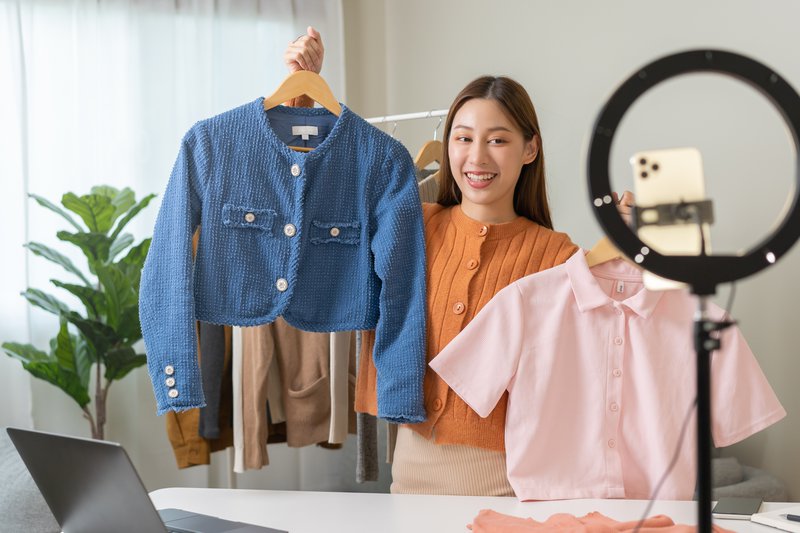Online sales are poised to take over an even bigger share of the business world. Back in 2019, eCommerce accounted for 13% of all B2B sales in the United States. Four years and a pandemic later, Statista projects this number to rise to 17% by the year’s end. This represents a potential revenue of $1.8 trillion dollars for US B2B operations in 2023 alone. But how do online businesses joining this shift toward the digital measure financial success? How do they know if their marketing and sales programs are pulling in more money than they spend? Thankfully, a number of sales metrics serve as indicators of a company’s success–for instance, customer lifetime value (CLV) and conversion rate (CR). But what exactly is average order value (AOV)? And how can you improve it?
What Is AOV, or Average Order Value?
As the name suggests, an average order value (AOV) is the total amount a typical customer spends on a single transaction. It’s a relatively simple metric comprising the store’s total revenue divided by the number of orders. Say that a company reports $1 million in quarterly revenue from 1,000 orders, then each order has generated $1,000.
Business is all about growth. And knowing your AOV will help your team develop programs to bump up your revenue significantly–without having to raise spending.

Why is AOV Important for Your eCommerce Business?
AOV determines the spend threshold for customers during a single shopping session. This AOV then becomes the baseline in figuring out how to entice customers to buy more. It can also help you understand how the average customer behaves when making a purchase.
If the AOV is $1,000, does that mean that most buyers have a set limit that’s slightly above $1,000 for each purchase? Does that AOV reflect the amount for X number of products that last for a given period of time? Knowing these details can help you craft better revenue-generating tactics without necessarily having to allocate additional funds to customer acquisition and marketing.
A basic example of leveraging AOV insights to grow revenue is the strategic application of promotional discounts. By offering discounts or free shipping for orders above your particular AOV, you can nudge customers to add extra items to their shopping cart till they hit the target total that qualifies them for the promotion.
A Note on Mean, Median, and Modal Values
It’s vital to be aware that simply applying discounts or free shipping for orders exceeding the AOV can backfire. Sales, marketing, and accounting will need to figure out the threshold amount needed so that these promotional costs won’t affect your bottom line. This is why retailers need to understand mean, median, and modal values when using AOV as a metric. For instance, using the modal values instead of the mean lets you include the most qualified customers. Otherwise, you might just be alienating customers with lower AOVs as the qualifications are too steep for them.
How Visual Merchandising Can Impact AOV
Your storefront’s appearance and navigational ease of use play crucial roles in encouraging customers to spend more per visit. With careful product placement–along with helpful information–you can make your merchandise shine, enhancing its appeal to visitors and engaging buyers who are still hesitant about making the purchase. More importantly, making the online store easily navigable so shoppers can locate items immediately will increase their willingness to do business.
In addition, effective visual merchandising can show the correlation between different items–boosting cross-selling, upselling, and bundling opportunities for related items in your inventory. When customers take up these offers, their total purchases will rise significantly. It’s a win-win situation for all parties.
By leveraging effective visual merchandising, you can convey a sense of urgency, encouraging customers to buy sooner rather than later. It’s an effective tactic that not only improves sales but also helps to wipe inventory.

Best Practices and Strategies to Improve AOV Through Visual Merchandising
For online stores, appearances matter. Making sure that buyers see the products they want from the get-go creates a hassle-free shopping experience. Customers already burned by cluttered or slow-responding eCommerce sites will likely stay and explore a well-merchandised storefront. Here are some successful strategies to keep buyers engaged while increasing their spend:
Make Sure Items on Display Are in Stock
A prominently-displayed product catches the most attention, which in turn can lead to further purchases. With real-time inventory updates, you can be sure that featured items are still available, thus minimizing customer disappointment. Buyers who have gone through the purchasing process, only to discover that their preferred product is already out of stock, won’t be returning soon.
Provide as Much Information as You Can
When buyers browse your online merchandise and find something interesting, the usual questions come up. How much? What are the available sizes/colors/variants? How many are in stock? Do you offer pricing bundles or bulk order discounts? Making this information readily available can boost the chances of finalizing a sale.
Provided your merchandising platform has the right features, it will be able to anticipate common customer questions and provide the answers automatically. This is especially important for stock inventory. Buyers will always want to know whether you’re able to cover their requirements–or the minimum order quantity (MOQ) that qualifies them for a special price.
Highlight Promotions Such as Bundles, Cross-sells, and Upsells
Increasing a customer’s AOV often means introducing them to products they didn’t know they needed. Moreover, bundling their frequently-purchased items with complementary products can lead to both products being selected.
This is especially effective when the bundle comes in at a lower price than each item would separately. The same goes for items marked for cross-sells and upsells. Make sure that the visual merchandising for each product clearly includes information that promotes the cross-sell, upsell, and bundle offerings.

Boost Your AOV With Zobrist’s Smart Merchandiser
As much as visual merchandising can boost your average order values, traditional eCommerce routes often entail exhausting sessions where you’ll have to manually arrange products and reconcile each with inventory reports to ensure accuracy.
Zobrist’s Smart Merchandiser provides online retailers an easier way to optimize virtual storefronts via automated visual merchandising. Teams use drag-and-drop to arrange display products. Instant integration with inventory management software means accurate data on each item’s stock level. Smart Merchandiser’s built-in analytics features also provide users with real-time information about each product’s views–plus conversion, revenue, and abandonment rates.
Smart Merchandiser has all the features to improve your operations’ efficiency and productivity–as well as increasing your revenue. Get in touch to tell us a little more about your company and we’ll be happy to arrange a free demonstration.



